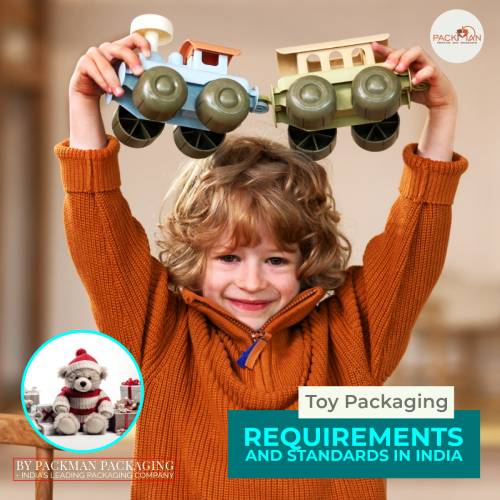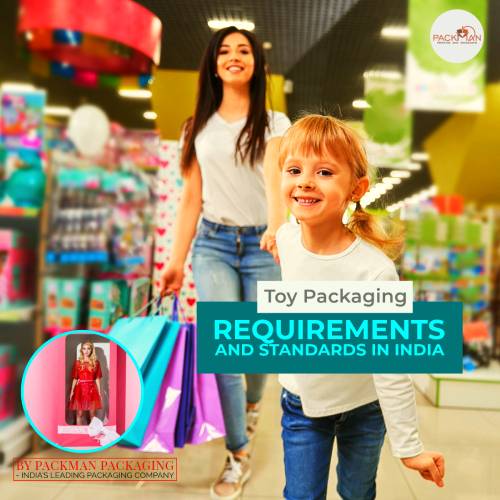In recent years, the toy industry in India has witnessed significant growth, fueled by increased disposable income and changing consumer preferences. As the demand for toys continues to rise, it becomes crucial to address the safety and quality of toy packaging. In India, there are specific requirements and standards that toy manufacturers must adhere to to ensure the well-being of consumers, especially children.
What are some of the toy packaging requirements and standards in India?
Packman Packaging India’s top packaging company for toy brands shares important factors to keep in mind for toy packaging. These are:
Safety Standards:
The Bureau of Indian Standards (BIS) plays a pivotal role in establishing and maintaining safety standards for various products, including toys. BIS has developed specific standards for toy safety under IS 9873, covering aspects like material quality, mechanical and physical properties, flammability, and labeling. Compliance with these standards is mandatory for all toy manufacturers operating in India.
Material Quality:
Toys are often made from a variety of materials, and ensuring the safety of these materials is paramount. BIS guidelines specify the permissible limits for heavy metals, such as lead and cadmium, in toy materials to prevent potential health hazards. Manufacturers must conduct rigorous testing to ensure that their toys meet these material safety standards.
Mechanical and Physical Properties:
Toys are subjected to various mechanical stresses during play, and it is crucial that they are designed to withstand these forces without posing any harm. BIS standards outline specific requirements for structural integrity, sharp edges, and small parts that could pose a choking hazard. Compliance with these standards helps prevent accidents and injuries during play.
Flammability:
Toy packaging materials must adhere to flammability standards to reduce the risk of fire accidents. This is particularly important considering that children may be less cautious in handling toys, and flame-retardant materials can significantly enhance overall safety.
Labeling Requirements:
Clear and informative labeling is an essential aspect of toy packaging in India. Labels must include vital information such as age appropriateness, safety warnings, and usage instructions. Additionally, labels must be in both English and Hindi, ensuring accessibility for a wider audience.
Environmental Considerations:
In recent times, there has been a growing emphasis on sustainable and eco-friendly packaging. While Indian regulations may not explicitly mandate specific environmental standards for toy packaging, there is a global trend toward reducing plastic usage and promoting recyclable materials. Toy manufacturers are encouraged to adopt environmentally friendly practices voluntarily to align with broader sustainability goals.
International Standards:
India recognizes the importance of aligning with international standards to ensure the competitiveness of its toy industry in the global market. Manufacturers exporting toys must comply with the standards set by international organizations like the International Organization for Standardization (ISO) to meet the expectations of consumers worldwide.
Toy packaging requirements and standards in India are designed to prioritize the safety and well-being of consumers, especially children. Adherence to these standards not only ensures the quality of toys but also contributes to building a positive reputation for the Indian toy industry. Toy manufacturers should stay updated with the evolving regulatory landscape and embrace environmentally sustainable practices to foster a safe and thriving industry for generations to come.





